Soon to be: Blue Safari Fly Fishing, a new name with the same extraordinary Seychelles adventures.
BEST ISLANDS FOR CATCHING THIS SPECIES

Alphonse Atoll
Cosmoledo Atoll
Providence Atoll

Milkfish on Fly
Milkfish, also known as Chanos Chanos, are challenging and hard-fighting opponents. Targeting these fish on fly was developed and pioneered on the heart of our operations, The Alphonse Group.
Milkfish are characterised by their torpedo-shaped body, large V-shaped tail, disproportionately large eyes, and a white underbelly.
Tips & Tricks
The Search
Milkfish are commonly found feeding in shallow water on the flats, in channels as well as on scumlines offshore. Targeting them is purely dependant on where and how they are feeding. Finding fish offshore often requires some travel time but is often well worth it.
The Tides
The key to targeting milkfish is fishing for the when they are feeding. Regardless of spring or neap tides, dropping tides are often the most productive period to fish for milkfish, with the condensation of their food sources.
The Tackle
The most commonly used setups when targeting milkfish are 9 and or 10 weight rods and matching reels with smooth drags. Reels are spooled with 300 yards of 50lb backing and a tropical floating fly line to match.
Milkfish Flies

Milky Dream
A combination of an olive, green, and chartreuse body imitates the algae that the fish graze on. Often a couple of strands of crystal or UV flash are added to impersonate the copepods that live around the algae beds. A couple of wraps of pink chenille can also be put on the head of the milky dream fly.

Wayne's Milky Magic
The Wayne’s Milky Magic fly, designed by Wayne Haselau, is commonly known as the milkman, as it guides the milkfish. Its design allows it to appear more enticing as the chenille represents the egg-sack of a variety of crustaceans caught up in the algae, creating a more protein-rich meal in the milkfish’s eyes.
Milkfish Caught on A Fly












Packages
Our packages are tailored to each destination and every guest, whether you fishing alone, with a friend or have the family join you, we have you covered.

Alphonse Island | Fly Fishing Package | Shared Skiff
From: $15,280 per person
A seven-night fly fishing package staying in single accommodation, with six days fly fishing on a shared skiff.

Providence | Fly Fishing Package | Shared Skiff
From: $16,950 per person
A seven-night fly fishing package staying in shared accommodation, with six days of fly fishing on a shared skiff.

Cosmoledo | Fly Fishing Package | Shared Skiff
From: $18,790 per person
A seven-night fly fishing package staying in shared accommodation, with six days fly fishing on a shared skiff.

Immerse Yourself In A Fly Fishing Trip That Protects Our Future
Join us on more than just a fly fishing trip, but a chance to protect some of the last pristine marine environments.




